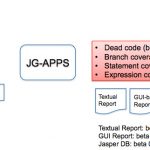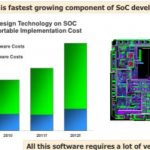Unless you are a small company with one design team, the chance you have standardized on one FPGA vendor for all your needs, forever and ever, is unlikely. No doubt you probably have a favorite, because of the specific class of part you use most often or the tool you are most familiar with, but I’d bet you use more than one FPGA vendor routinely.… Read More
Tag: simulation
Formal Going Mainstream
In Mike Muller’s keynote at DAC he wanted to make formal approaches an integral part of writing RTL. After all, formal captures design intent and then, at least much of the time, can verify whether the RTL written actually matches that intent. Today, formal is not used that way and is typically something served “on the side” by specialist… Read More
Mentor’s New Emulator
Mentor announced the latest version of their Veloce emulator at the Globalpress briefing in Santa Cruz. The announcement is in two parts. The first is that they have designed a new custom chip with twice the performance and twice the capacity. It supports up to two billion gate designs and many software engineers. Surprisingly … Read More
Multi-Mode Simulation – What’s New at Cadence?
Every week I receive several webinar invitations, so the recent one from Cadence about Virtuoso Multi-Mode simulation caught my fancy because I had met with John Pierce at DAC and wanted to see what was new since then and see how they compared with Mentor and Synopsys tools.
John Pierce, Product Marketing Director
This webinar runs… Read More
Simulating in the Cloud
Yesterday I met with David Hsu who is the marketing guy for Synopsys’s cloud computing solution that they announced at their user-group meeting earlier this year. It was fun to catch up; David used to work for me back in VLSI days although he was an engineer writing place and route software back then.
David admits that this is… Read More






